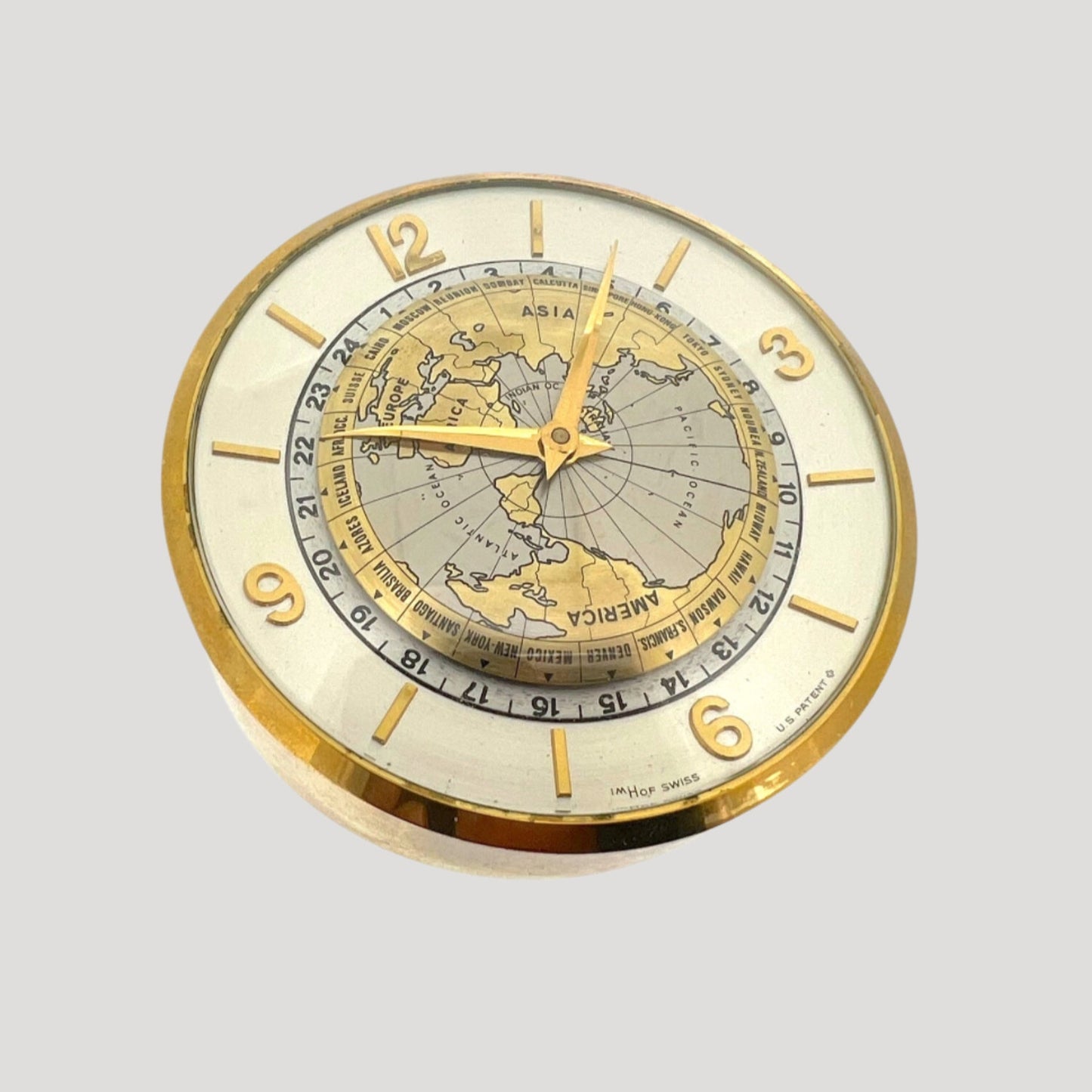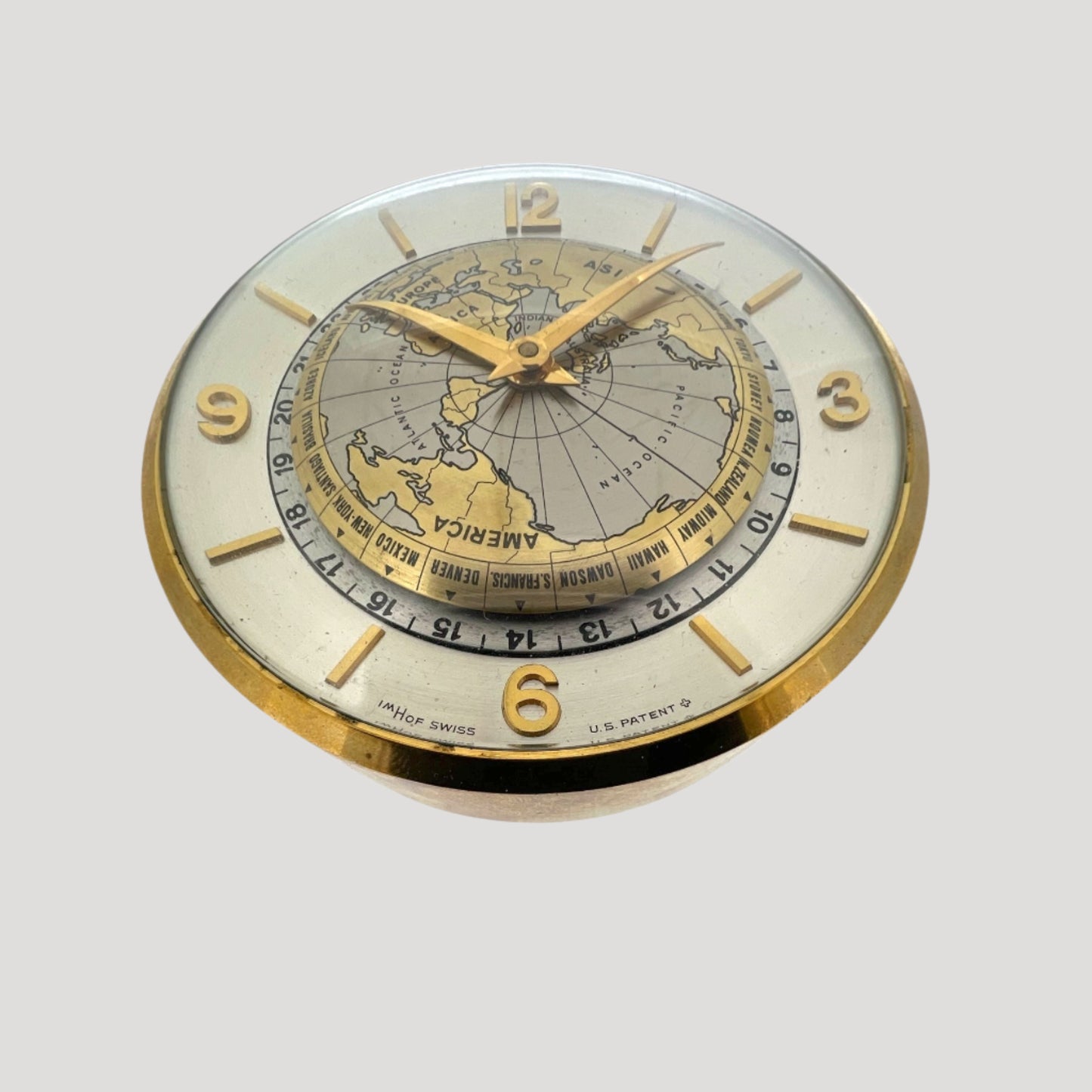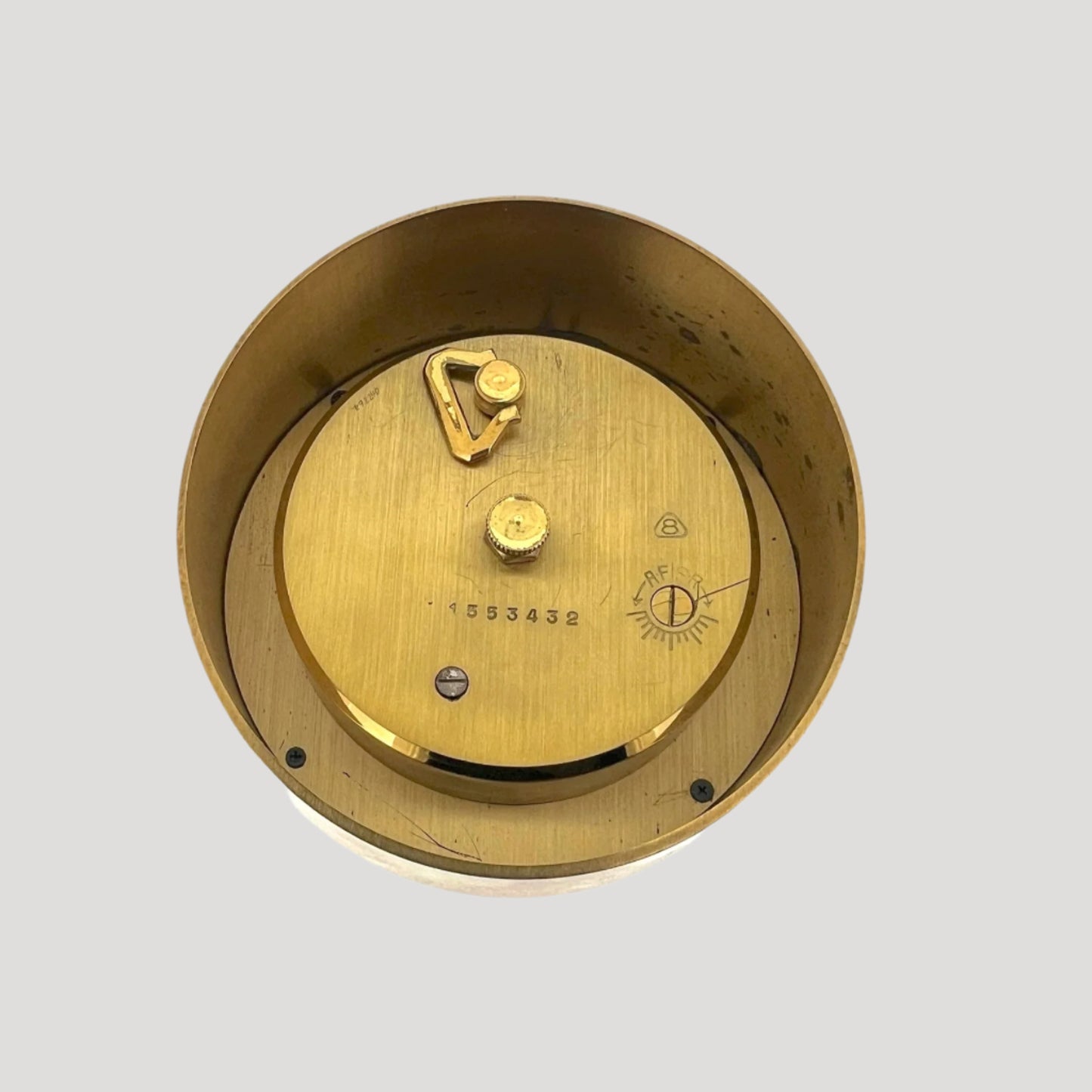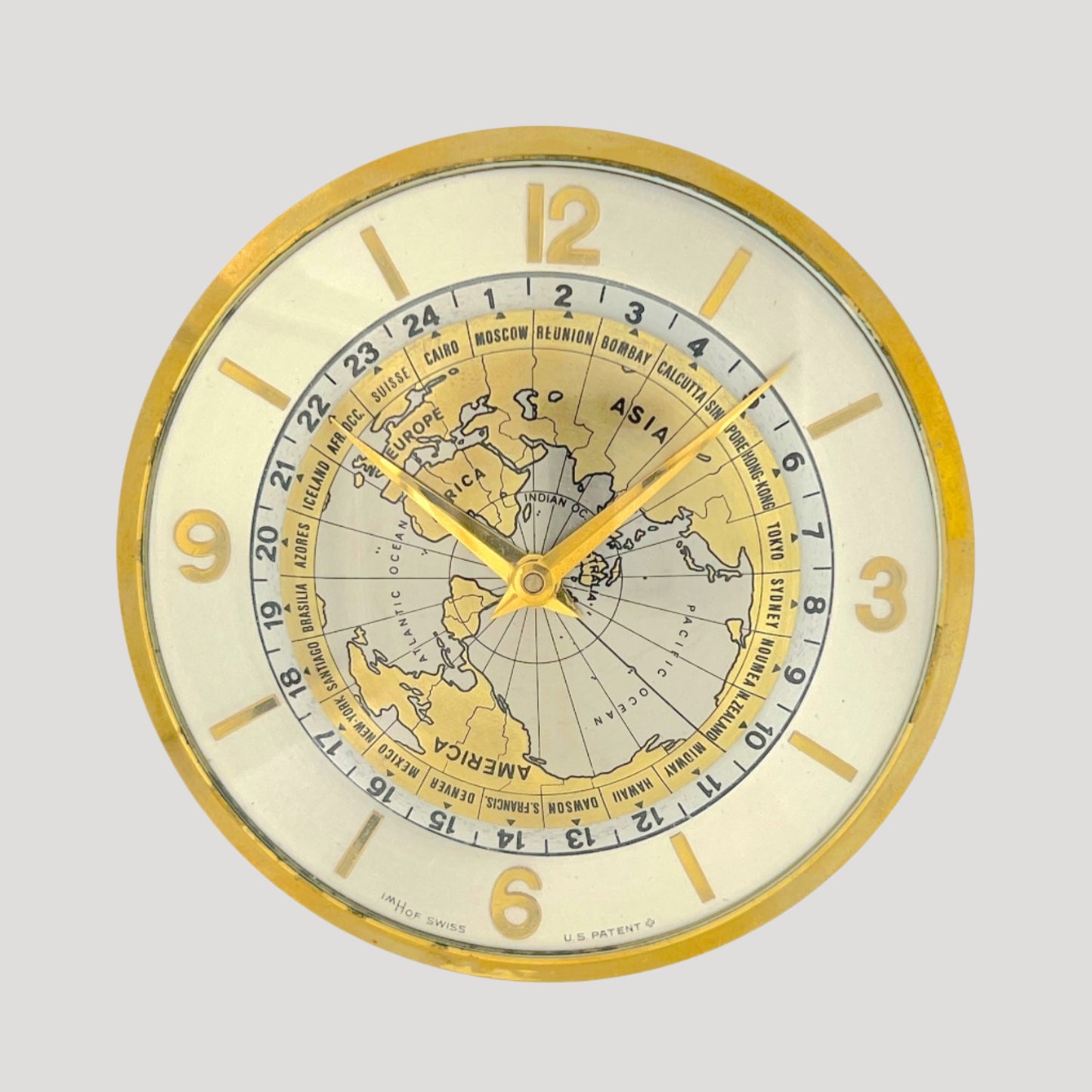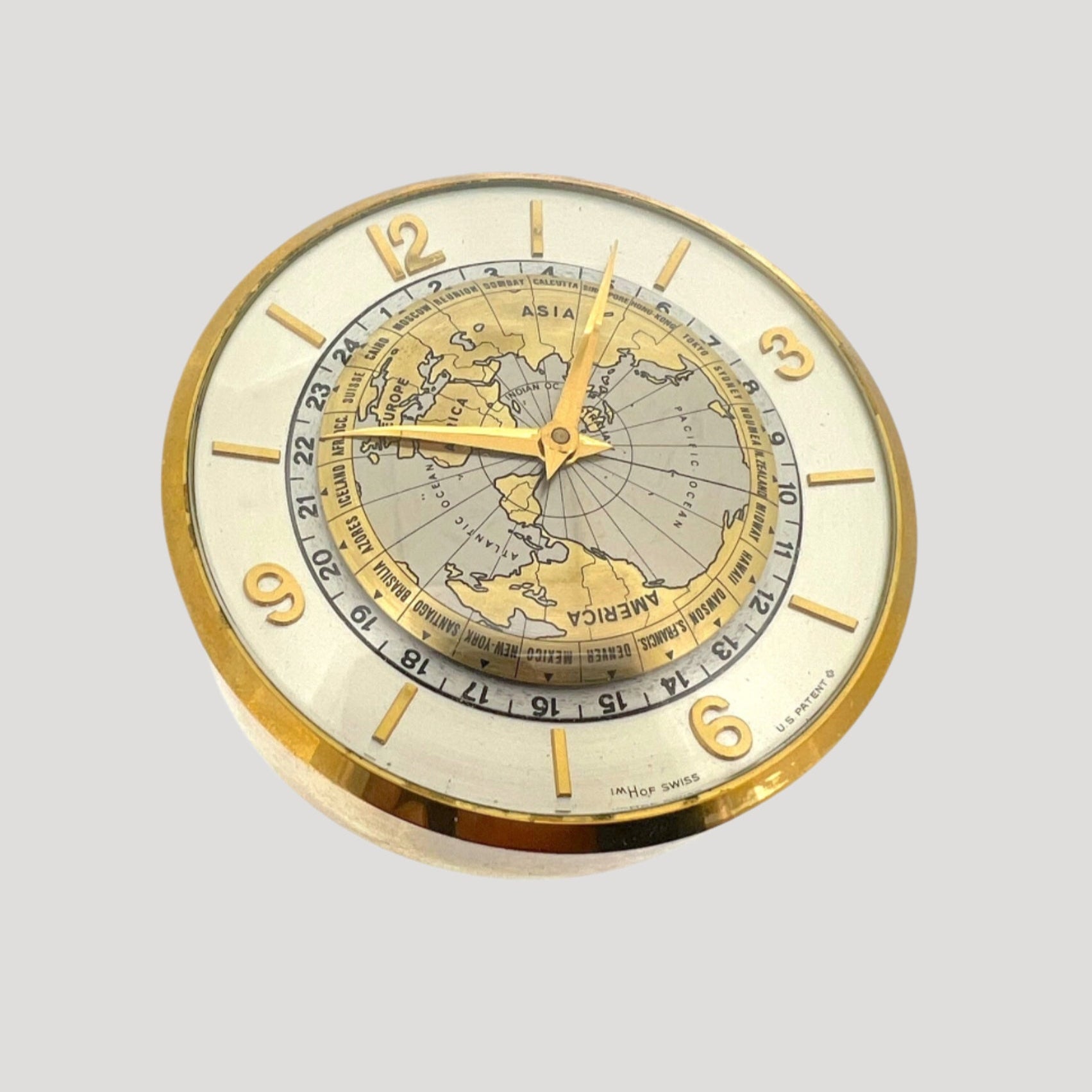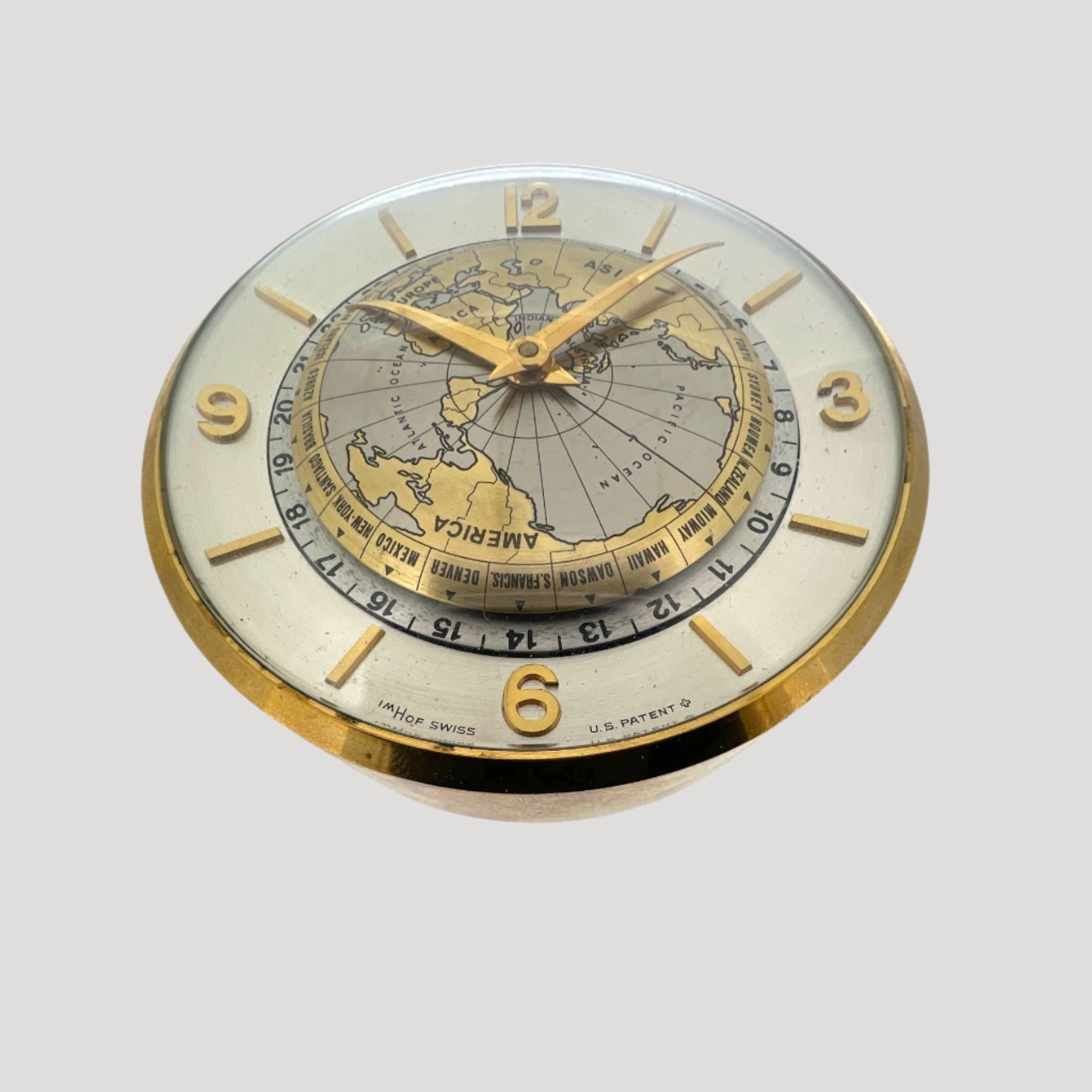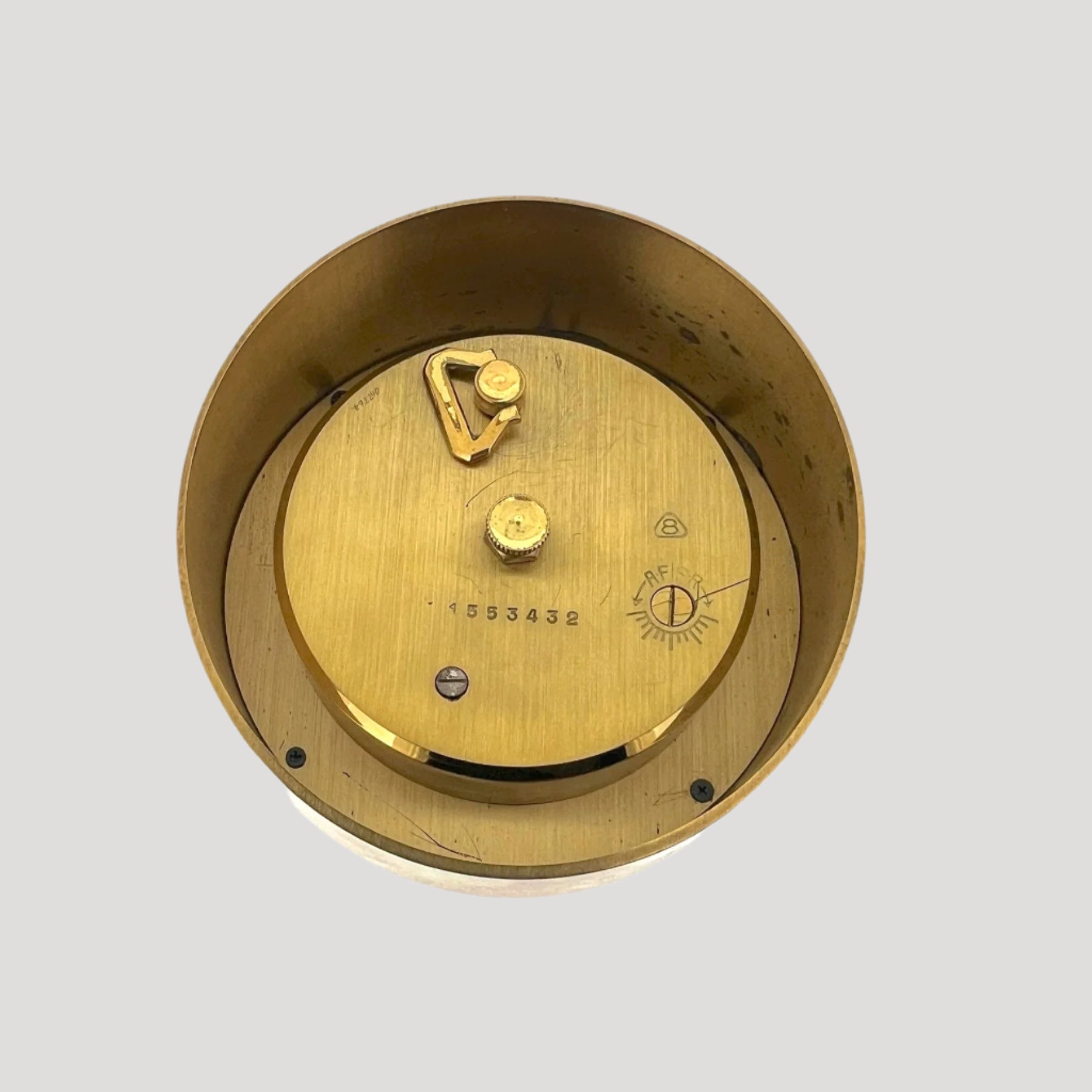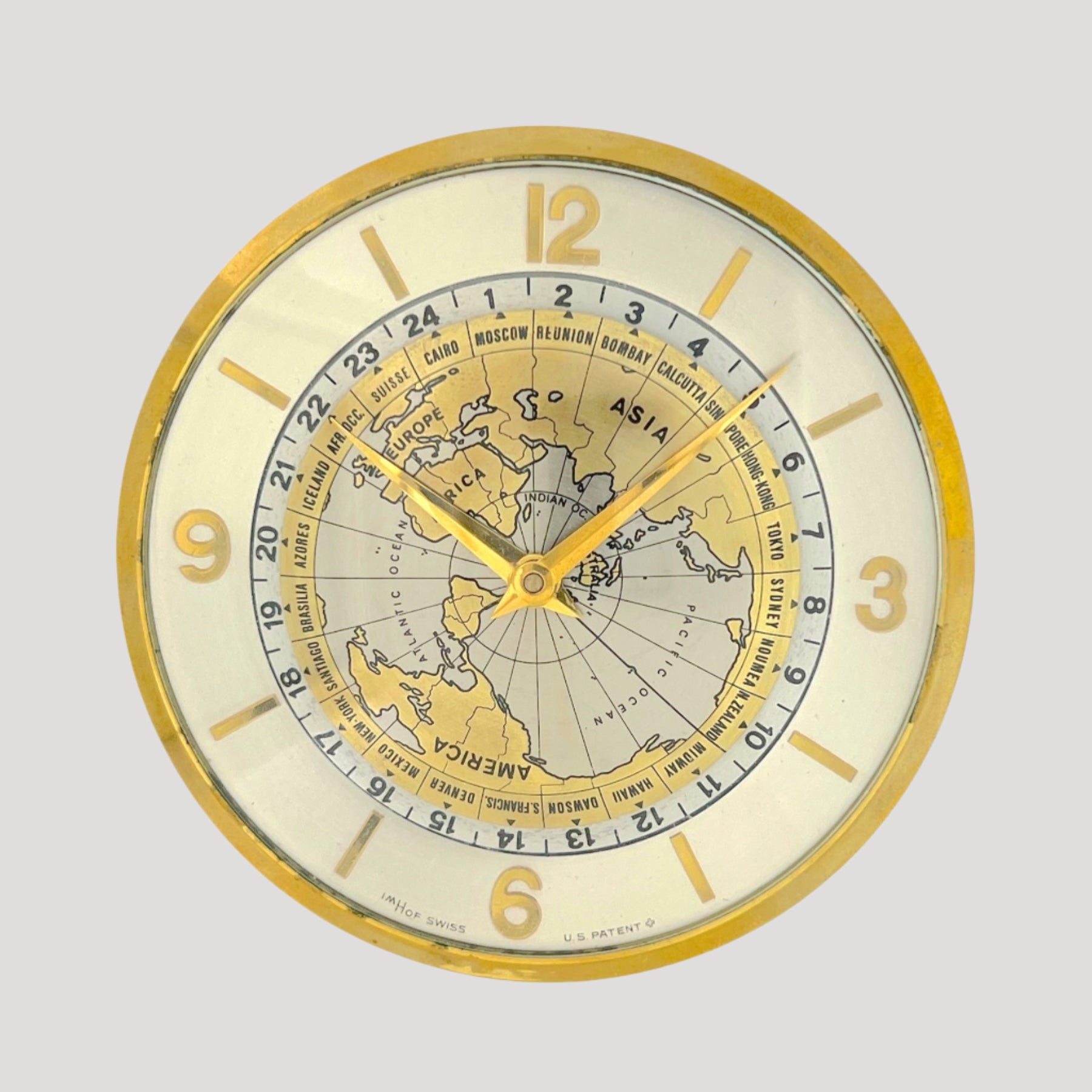Imhof
Imhof Swiss"World Time" Desk Clock Rare
Imhof Swiss"World Time" Desk Clock Rare
Couldn't load pickup availability
A fine and rare Imhof Swiss"World Time" gold-plated metal desk clock with world time indication
Mechanical vintage collector's watch from Imhof Swiss. The dial shows a world map and the inscription “America”. The brass case is engraved with the inscription "Le temps des vacances - l'heure de la Suisse" in German and English.
Diameter 8 cm
Height 3.5 cm
Imhof is a distinguished Swiss clockmaker renowned for its exquisite table and desk clocks that seamlessly blend artistry with precision engineering. Established in 1888 by Frédéric Imhof in La Chaux-de-Fonds—a city celebrated for its horological heritage—the company evolved from crafting dials for major clockmakers to producing complete timepieces under the leadership of Arthur Imhof.
The need to tell the time accurately in all 24-hour time zones is a relatively recent invention within the annals of timekeeping history. It was not until the advent of the railroad in the 1800s that there was a need to divide the world into time zones, also known as standard time. Standard time is a human construction which asserts that the time kept across a geographical area is uniform – even though according to the sun it is not. Britain, who led the world in railroad and electric telegraph technology, was the first to adopt standard time in the 1840s. In the USA however, by the 1880s there were some 49 different “official times” kept across the US railroad network, leading to great confusion for travelers and railroad administrators.
The next step was universal time, and this was determined at the International Meridian Conference in Washington D.C. On October 1, 1884, 41 delegates from 25 countries conducted three weeks of negotiations which resulted in Greenwich becoming the prime meridian of the world and Greenwich Mean Time (GMT) the world’s universal time.Fleming is credited with "the initial effort that led to the adoption of the present time meridians.
Although the world was happily existing within a 24-hour time zone for many decades, it was not until Louis Cottier’s brilliant invention in 1931 which clearly indicated all time zones on the dial of a watch that the watchmakers could offer travelers an easy way to tell the time around the globe. Cottier’s genius lies in his design which legibly displays real time in cities or islands distributed over our planet’s 24 time zones. Even in today’s World Time watches, the basic principle of Cottier’s design remains the same. City names circle the periphery of the dial above an inner 24-hour ring that turns counterclockwise. The ring’s movement simultaneously coordinates the times in all time zones, while the hands indicate the time in the place whose name is displayed at 12 o’clock, which is considered local time.
✅ Authenticity Guaranteed — Certified by Swiss experts
✅ Trusted Provenance
✅ Secure and encrypted payments with our leading Swiss partner Worldline
Share
